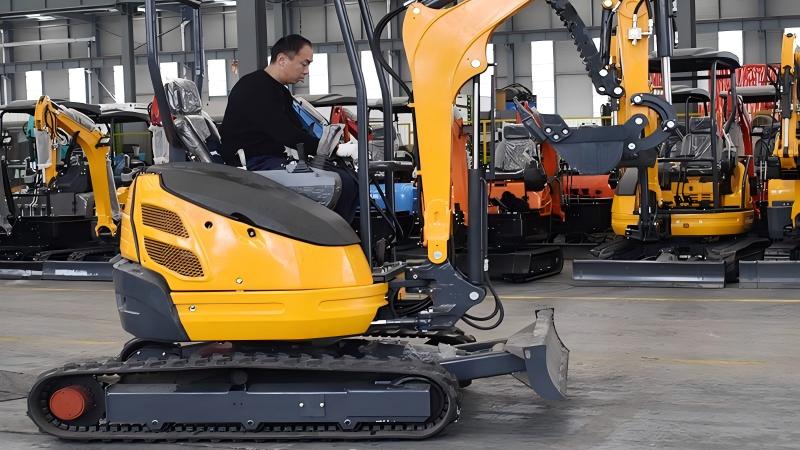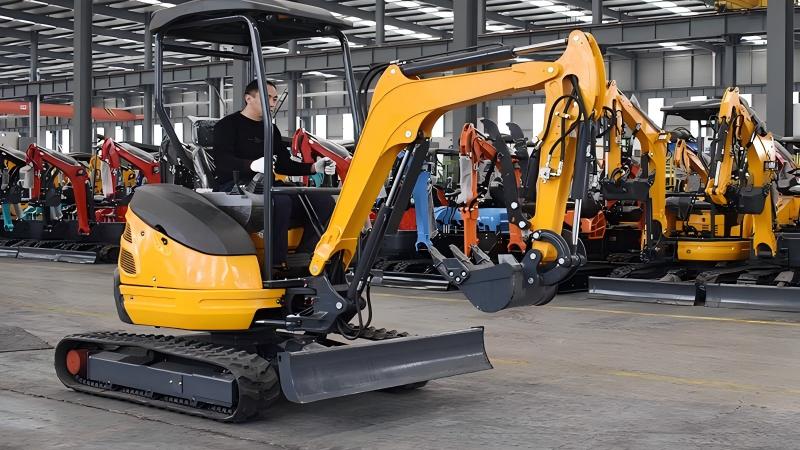Excavators are powerful and versatile machines, indispensable across construction, mining, and various other industries. Their ability to move vast quantities of earth and materials efficiently makes them invaluable tools. However, their size, weight, and dynamic operation also present significant safety challenges. Accidents involving excavators can lead to severe injuries, fatalities, and extensive property damage. Therefore, a thorough understanding and strict adherence to safety protocols are paramount for anyone involved in their operation. This article outlines the essential guidelines for operating an excavator safely, covering pre-operational checks, safe operational practices, and crucial maintenance and emergency procedures.
Pre-Operational Checks: Essential Groundwork
Safety begins before the engine starts. A diligent approach to pre-operational checks ensures both the operator and the machine are ready for work.
Operator Readiness: The foundation of safe operation is a qualified operator. Every operator must possess the required certifications and licenses, along with a comprehensive understanding of the specific excavator model they are using, as detailed in the manufacturer's manual. Beyond formal qualifications, operators must be physically and mentally fit, well-rested, and free from any impairment that could compromise their ability to operate the machine safely.

Site Assessment and Preparation: Before any digging commences, a thorough assessment of the work environment is critical:
Hazard Identification: Proactively identify potential hazards. Always "Call Before You Dig" (811 in the U.S. or local equivalent) to locate and mark underground utilities like gas lines, electrical cables, and water pipes. Identify overhead power lines, unstable ground conditions (e.g., saturated soil, recent fill), steep slopes, and existing structures.
Exclusion Zones: Establish clearly marked exclusion zones around the excavator's working area, including its swing radius and potential falling object zones, to keep unauthorized personnel at a safe distance.
Spotters and Communication: In areas with limited visibility or complex maneuvers, utilize trained spotters or flaggers to guide the operator and manage site traffic. Maintain clear communication channels.
Weather: Consider current and forecasted weather conditions. Rain, snow, ice, or high winds can significantly affect ground stability, visibility, and machine control.
Machine Walk-Around Inspection: A systematic walk-around inspection before each shift is mandatory to identify any mechanical issues:
Fluid Levels: Check engine oil, hydraulic fluid, coolant, and fuel levels.
Hoses and Connections: Inspect all hydraulic hoses and connections for leaks, chafing, bulges, or cracks.
Undercarriage: Examine tracks or tires for proper tension/pressure, wear, and damage. Check the undercarriage components like rollers and idlers.
Boom, Arm, and Bucket: Look for cracks, dents, or signs of stress in the structural components. Inspect all pins and bushings for wear and security.
Safety Features: Verify all lights, mirrors, and windows are clean and functional. Ensure safety decals are legible and guards are in place. Confirm the fire extinguisher is charged and accessible. Check the seatbelt condition and ensure the Rollover Protective Structure (ROPS) and Falling Object Protective Structure (FOPS) are intact. Test the horn and backup alarm.
Safe Operational Practices: Mastering Control
Operating an excavator demands constant vigilance, precision, and adherence to established procedures.
Entering and Exiting the Cab: Always maintain three points of contact (two hands, one foot or vice versa) when entering or exiting the cab. Use designated steps and handholds, facing the machine. Never jump off.
Starting the Excavator: Before starting, ensure the machine is in neutral and the parking brake is engaged. Allow the engine and hydraulic system to warm up as per the manufacturer's guidelines, then slowly test all controls for proper function.
Digging and Excavation Techniques:
Stable Base: Always work from a stable, level platform. Avoid digging directly beneath the machine or creating undercuts that could compromise ground stability.
Machine Limits: Understand and never exceed the excavator's rated lifting capacity, reach, or stability limits. Overloading the bucket or extending too far can lead to tip-overs.
Working on Slopes: When working on slopes, dig downhill for better stability. Avoid traversing steep slopes, especially with a loaded bucket, as this significantly increases the risk of rollover. If unavoidable, keep the boom and bucket low and close to the machine.
Spoil Piles and Trenches: Place spoil piles at a safe distance from the excavation edge to prevent collapse. When excavating trenches, implement shoring, sloping, or shielding as required by regulations and soil conditions; never enter an unprotected trench.
Loading and Swinging:
Proper Positioning: Position the excavator and haul unit (truck) to facilitate efficient and safe loading. Communicate clearly with the truck driver.
Load Distribution: Distribute the load evenly within the truck bed to maintain the truck's stability.
Clearance and Control: Maintain ample clearance from all obstacles, structures, and personnel within the excavator's swing radius. Execute swings and slewing movements smoothly and deliberately; avoid sudden stops or rapid changes in direction. Never swing the bucket or any part of the excavator over the truck cab, especially if the operator is inside.
Traveling:
Low Center of Gravity: When traveling, keep the boom and arm lowered and close to the machine, with the bucket just above the ground. This lowers the center of gravity and enhances stability.
Visibility: Always be aware of your surroundings. If visibility is restricted, use a spotter.
Ground Conditions: Assess ground conditions before moving. Avoid soft, uneven, or excessively steep terrain.
Slopes: Travel straight up or down slopes, never across them. Keep the heaviest part of the machine (counterweight) uphill.
Working Near Utilities: Always adhere to the "Call Before You Dig" rule. Even with marked lines, treat them as live. Within the designated "tolerance zone" around marked utilities, hand dig or use non-invasive methods to expose the lines.
Parking and Shutting Down:
Level Ground: Park the excavator on firm, level ground.
Lower Attachments: Lower the boom and bucket (or other attachment) fully to the ground with slight down pressure.
Secure Machine: Engage the parking brake, place controls in neutral, and follow the manufacturer's shutdown sequence. Remove the ignition key and secure the machine to prevent unauthorized use.
Maintenance and Emergency Preparedness: Sustaining Safety
Routine Maintenance: Adhering to the manufacturer's scheduled maintenance is crucial. Regular lubrication, fluid changes, and component inspections prevent unexpected failures that could lead to dangerous situations. Operators should promptly report any faults or unusual behavior to maintenance personnel.
Servicing Safety: When maintenance is performed, implement strict lockout/tagout procedures to prevent accidental startup. Always relieve hydraulic pressure before working on hydraulic components. Use proper tools and wear appropriate PPE.
Emergency Procedures: Being prepared for emergencies can mitigate harm:
Machine Malfunctions: Know how to safely shut down the excavator in case of malfunction (e.g., engine issues, hydraulic failure).
Roll-Over/Tip-Over: If equipped with ROPS/FOPS, stay in the cab, brace yourself, and hold on. Do not attempt to jump out. After the event, use emergency egress.
Fire: Use the onboard fire extinguisher for small fires. For larger fires, immediately evacuate, move to a safe distance, and call emergency services.
Other Emergencies: Know basic first aid, access to the first-aid kit, and procedures for medical emergencies or environmental spills.
Conclusion
Operating an excavator safely is an ongoing commitment that requires comprehensive training, meticulous pre-operational checks, disciplined operational practices, and diligent maintenance. It is a shared responsibility among operators, supervisors, and management to cultivate and uphold a strong safety culture on every job site. By prioritizing safety in every action and decision, we can significantly reduce risks, prevent accidents, and ensure these powerful machines contribute effectively and without unnecessary harm to life or property.
Post time:Sep-25-2020


